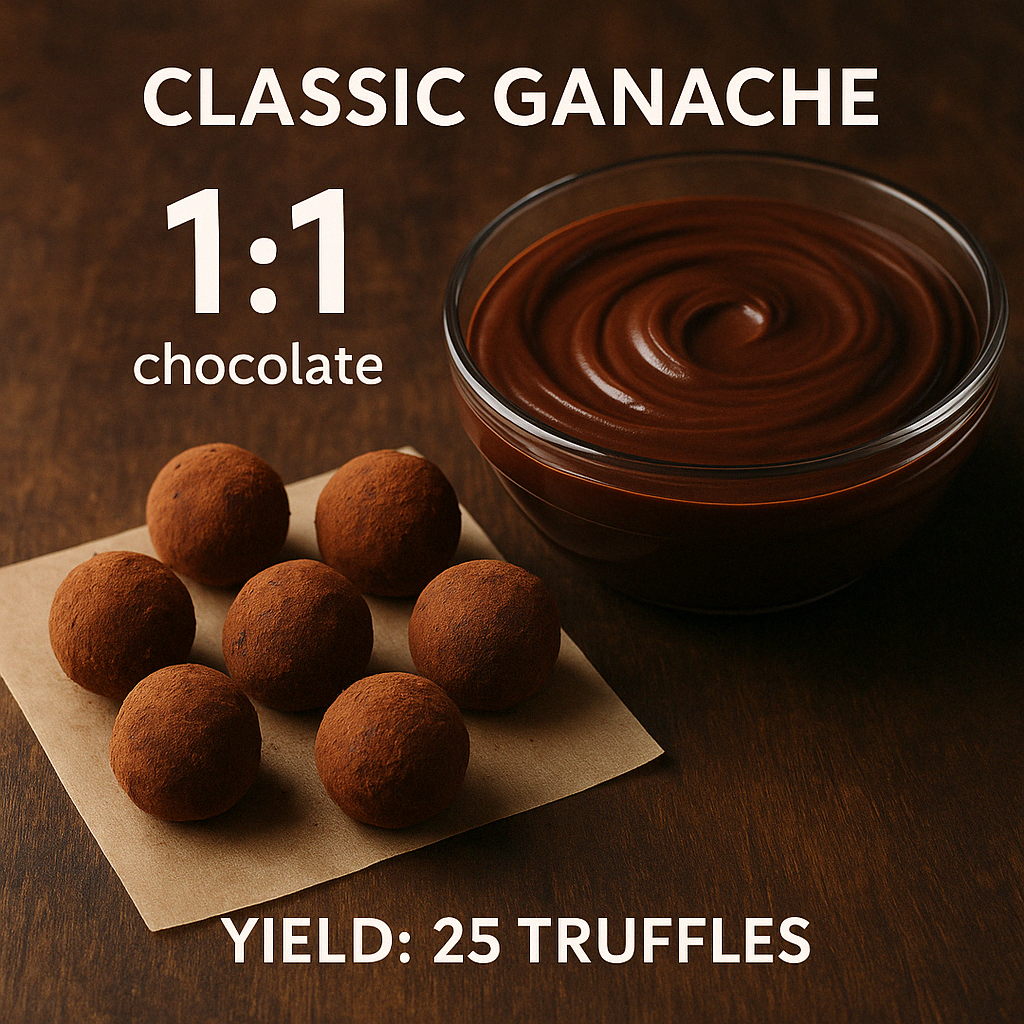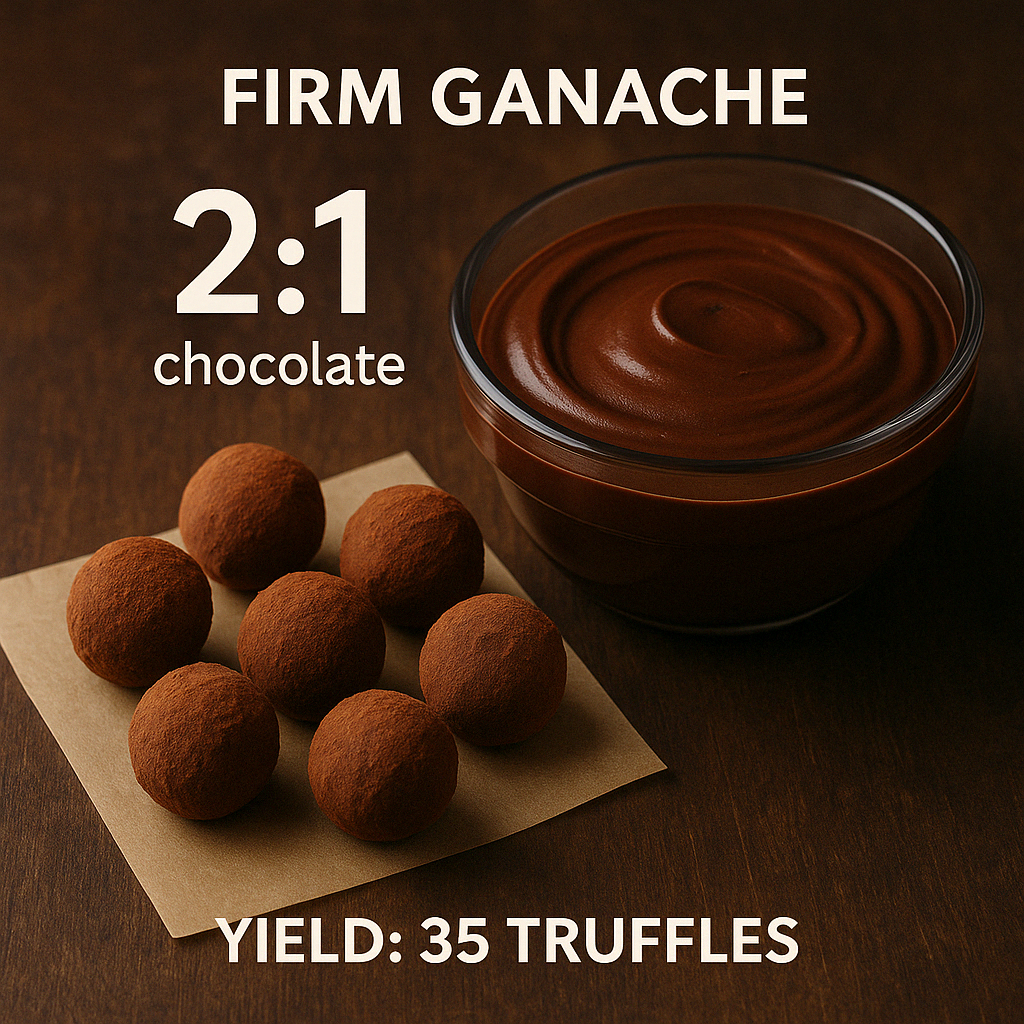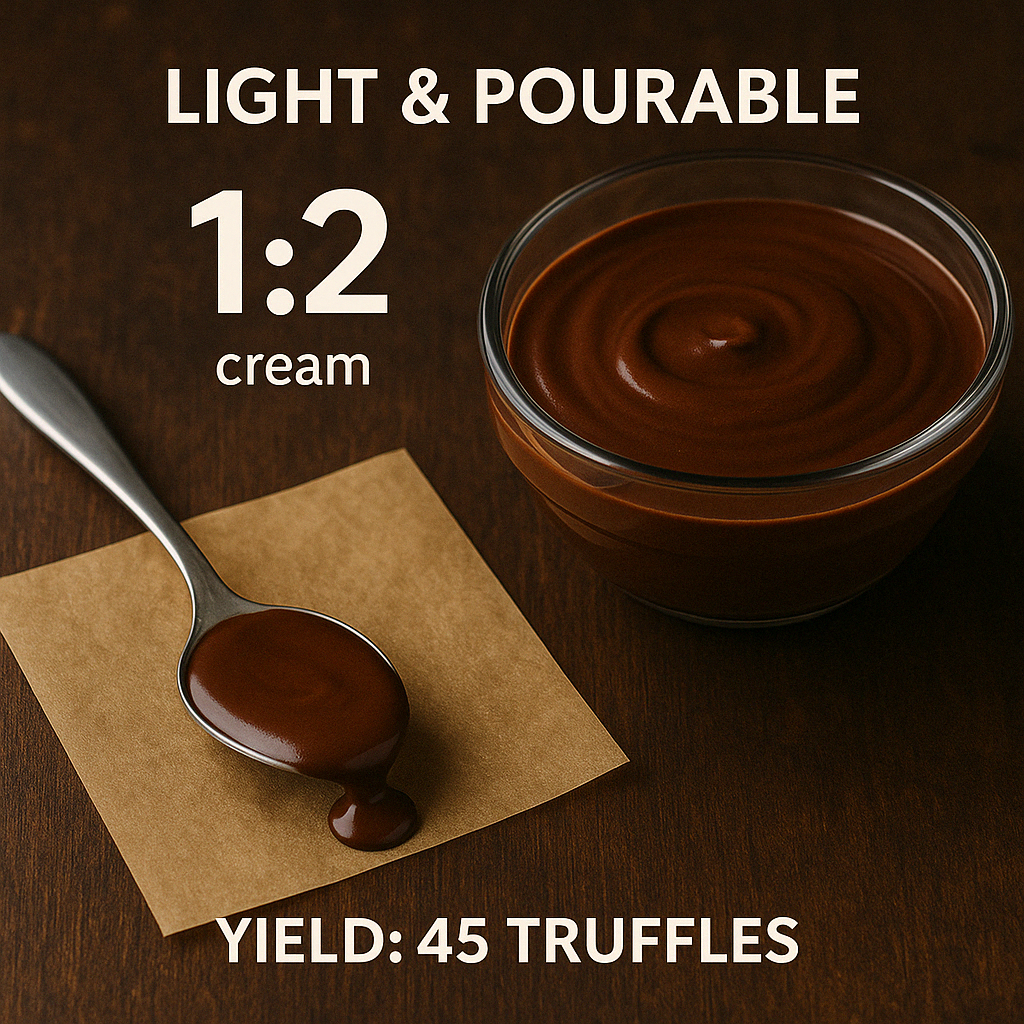If there’s one question I get asked time and again during my chocolate demonstrations—whether I’m teaching in Yorkshire colleges or leading tastings in the rainforests of São Tomé—it’s this: “How do you get ganache just right?”
Ganache might sound like a fancy word whispered behind the velvet curtains of a Parisian patisserie, but truly—it’s chocolate’s most loyal companion. Whether you’re hand-rolling truffles, layering a tart, or whisking up a rich chocolate sauce for a classic British pud, understanding ganache ratios is the secret sauce. Once you’ve got the basics down, you’re free to riff, remix, and elevate your chocolate creations like a pro.
Let’s explore the delicious science of ganache: the essential ratios, vegan and water-based alternatives, flavour infusion techniques—and those top chef tips that make all the difference.
What Is Ganache?
Ganache is a silky-smooth emulsion of chocolate and liquid, most traditionally double cream. Change the balance, and you change the texture—pourable, spreadable, fudgy or airy. That balance—or ganache ratio—is the key to mastering texture and application.
The Three Core Ganache Ratios Every Chocolatier Should Know
1:1 – The Classic Ganache Ratio
Equal parts chocolate and cream.
This is your go-to for silky truffle centres and decadent tart toppings.
• Texture: Soft and pipeable when cool; melts luxuriously on the tongue.
• Perfect For: Truffles, tart glazes, cake layers, warm sauces.
• Example: 200g dark chocolate : 200g double cream
Method: Finely chop the chocolate. Bring cream to a gentle simmer, pour over the chocolate, let sit for 30 seconds, then stir slowly from the centre outwards until smooth and glossy.
2:1 – Firm Ganache for Structure Twice as much chocolate as cream.
This produces a firmer set—ideal for structure, slicing, or rolling.
• Texture: Fudgy, dense, holds its shape.
• Perfect For: Rolled truffles, bonbon centres, layered confections.
• Example: 400g chocolate : 200g cream
Top Tip: Milk and white chocolate have more sugar and fat, so increase to 2.5:1 or even 3:1 for best results.
1:2 – Light & Pourable Ganache One part chocolate to two parts cream.
A softer ganache with a luxurious pour.
• Texture: Light, pourable, airy when whipped.
• Perfect For: Chocolate sauces, whipped ganache, verrines, tart glazes.
• Example: 100g chocolate : 200g cream
Whip It: Chill overnight, then gently whip for a mousse-like texture that’s perfect for piping.
Water Ganache – Minimalist, Intense, Dairy-Free
Yes, you can make ganache with water! It’s a myth that chocolate seizes with water—as long as you add the liquid correctly. This minimalist ganache is flavour-forward, dairy-free and clean on the palate.
• Ratio: 1:1 (e.g. 200g chocolate : 200g hot water)
• Texture: Silky and intense.
• Shelf Life: 2–5 days refrigerated.
• Use: Tea-infused, floral, or fruit-based recipes.
Tip: For a firmer finish, try 2:1 (chocolate to water). Avoid acidic juices unless carefully balanced.
Vegan Ganache – Plant-Based Indulgence
Whether it’s for dietary reasons or pure flavour, vegan ganache has become a star in its own right. Done right, it’s every bit as rich and glossy as traditional versions.
• Good Bases: Oat cream, cashew milk, almond milk, coconut cream.
Go-To Ratios:
• 2:1 for firm truffles
• 1:1 for pipeable fillings
• 1:2 for whipped or pourable applications
Extra Tip: Add a teaspoon of coconut oil or cocoa butter for extra gloss and smoothness.
Flavour Like a Pro – Infusing Ganache
Here’s where your creativity comes to life. Once you’ve nailed your ratios, start layering in flavours—herbs, teas, spices, alcohols, honeys, fruits.
Flavour Base Ratio Use How to Infuse
Earl Grey Tea 1:1 or 1:2 Infuse tea leaves in cream or water, then strain
Honey 2:1 vegan Stir into ganache after emulsifying – beautiful with oat cream
Whisky or Rum 2:1 firm Add warmed alcohol after emulsifying
Raspberry Purée 1:2 soft Replace part of cream or water
Chilli/Citrus Zest Any Steep in warm cream, strain before combining
Pro Tip – How Professionals Extend Ganache Shelf Life
In professional kitchens, I often use invert sugar, glucose, or sorbitol (10–15% of the cream weight) to extend ganache shelf life, reduce water activity, and improve texture. It’s a quiet trick that makes a big difference in stability, especially for chocolates destined for gifting.
Final Words from the Ganache Bench
Ganache isn’t just a recipe—it’s a relationship. It’s chocolate and liquid coaxed into balance through gentle heat and a bit of alchemy. Once you’ve mastered the ratios, the doors open to a world of invention—flavours, textures, and techniques tailored to your unique style.
From piping truffles in a Yorkshire kitchen to blending single origin chocolates in the tropics, I’ve learned that ganache is where the magic begins.



